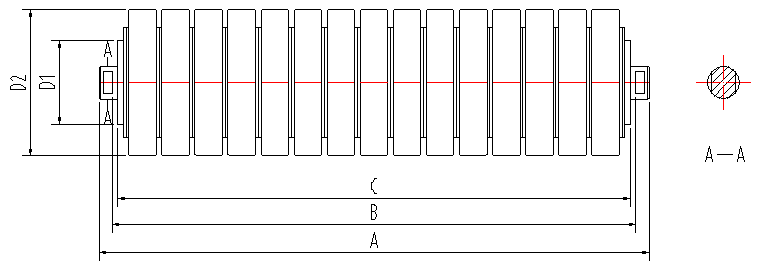 Afrikaans
Afrikaans  Albanian
Albanian  Amharic
Amharic  Arabic
Arabic  Armenian
Armenian  Azerbaijani
Azerbaijani  Basque
Basque  Belarusian
Belarusian  Bengali
Bengali  Bosnian
Bosnian  Bulgarian
Bulgarian  Catalan
Catalan  Cebuano
Cebuano  Corsican
Corsican  Croatian
Croatian  Czech
Czech  Danish
Danish  Dutch
Dutch  English
English  Esperanto
Esperanto  Estonian
Estonian  Finnish
Finnish  French
French  Frisian
Frisian  Galician
Galician  Georgian
Georgian  German
German  Greek
Greek  Gujarati
Gujarati  Haitian Creole
Haitian Creole  hausa
hausa  hawaiian
hawaiian  Hebrew
Hebrew  Hindi
Hindi  Miao
Miao  Hungarian
Hungarian  Icelandic
Icelandic  igbo
igbo  Indonesian
Indonesian  irish
irish  Italian
Italian  Japanese
Japanese  Javanese
Javanese  Kannada
Kannada  kazakh
kazakh  Khmer
Khmer  Rwandese
Rwandese  Korean
Korean  Kurdish
Kurdish  Kyrgyz
Kyrgyz  Lao
Lao  Latin
Latin  Latvian
Latvian  Lithuanian
Lithuanian  Luxembourgish
Luxembourgish  Macedonian
Macedonian  Malgashi
Malgashi  Malay
Malay  Malayalam
Malayalam  Maltese
Maltese  Maori
Maori  Marathi
Marathi  Mongolian
Mongolian  Myanmar
Myanmar  Nepali
Nepali  Norwegian
Norwegian  Norwegian
Norwegian  Occitan
Occitan  Pashto
Pashto  Persian
Persian  Polish
Polish  Portuguese
Portuguese  Punjabi
Punjabi  Romanian
Romanian  Russian
Russian  Samoan
Samoan  Scottish Gaelic
Scottish Gaelic  Serbian
Serbian  Sesotho
Sesotho  Shona
Shona  Sindhi
Sindhi  Sinhala
Sinhala  Slovak
Slovak  Slovenian
Slovenian  Somali
Somali  Spanish
Spanish  Sundanese
Sundanese  Swahili
Swahili  Swedish
Swedish  Tagalog
Tagalog  Tajik
Tajik  Tamil
Tamil  Tatar
Tatar  Telugu
Telugu  Thai
Thai  Turkish
Turkish  Turkmen
Turkmen  Ukrainian
Ukrainian  Urdu
Urdu  Uighur
Uighur  Uzbek
Uzbek  Vietnamese
Vietnamese  Welsh
Welsh  Bantu
Bantu  Yiddish
Yiddish  Yoruba
Yoruba  Zulu
Zulu High-Performance Ceramic Lagging Pulleys for Enhanced Conveyor Efficiency
Understanding Ceramic Lagging Pulleys Enhancing Performance and Durability
In the realm of industrial applications, efficiency and durability are paramount, particularly when it comes to conveyor systems. One critical component that plays a significant role in this regard is the lagging on pulleys, specifically ceramic lagging. Ceramic lagging is increasingly gaining prominence due to its unique properties and advantages over traditional materials.
What is Ceramic Lagging?
Ceramic lagging refers to a protective layer applied to the surface of conveyor pulleys, typically made from rubber or other elastomeric materials infused with ceramic tiles. This innovative design aims to enhance the performance of the conveyor system by providing superior grip and reducing slippage during operation. The addition of ceramic tiles increases the overall durability of the lagging, making it resistant to wear and tear, which is particularly vital in heavy-duty applications.
Advantages of Ceramic Lagging
1. Enhanced Traction One of the primary benefits of ceramic lagging is its exceptional traction capabilities. The ceramic tiles create a rough surface that significantly increases the coefficient of friction between the conveyor belt and the pulley. This enhanced grip minimizes slippage, ensuring that materials are transported efficiently without interruption.
2. Improved Wear Resistance Ceramic materials are known for their hardness and wear resistance. By utilizing ceramic lagging, industries can considerably prolong the lifespan of their conveyor systems. This reduced wear and tear not only lowers maintenance costs but also diminishes the frequency of replacement, leading to greater operational efficiency.
ceramic lagging pulley

3. Corrosion and Chemical Resistance In environments where the conveyor system is exposed to harsh chemicals or corrosive substances, ceramic lagging provides a robust solution. Its resistance to various chemicals and moisture ensures that the lagging maintains its integrity over time, enhancing the overall reliability of the conveyor.
4. Temperature Resistance Ceramic lagging can withstand a range of temperatures without degrading. This feature is particularly beneficial in industries requiring the transportation of materials at extreme temperatures, ensuring that the efficiency of the conveyor system remains unimpeded.
5. Noise Reduction The use of ceramic lagging can also contribute to a quieter operation. By providing a smoother surface and better grip, the noise generated during the belt movement can be significantly reduced, leading to a more pleasant working environment.
Applications of Ceramic Lagging Pulleys
Ceramic lagging is particularly advantageous in various applications, including mining, aggregate processing, and bulk material handling. In these industries, the demands on conveyor systems are high, and the risk of slippage can lead to significant operational delays and safety concerns. Implementing ceramic lagging pulleys helps mitigate these risks, ensuring smooth and efficient material transport.
Conclusion
Ceramic lagging pulleys represent a significant advancement in conveyor technology. Their unique properties offer numerous benefits, including enhanced traction, improved wear resistance, and increased durability. As industries continue to strive for efficiency and reliability, the adoption of ceramic lagging will likely become more widespread, setting a new standard in the maintenance and performance of conveyor systems. By investing in ceramic lagging, businesses can optimize their operations, reduce downtime, and ultimately improve their bottom line.
-
Revolutionizing Conveyor Reliability with Advanced Rubber Lagging PulleysNewsJul.22,2025
-
Powering Precision and Durability with Expert Manufacturers of Conveyor ComponentsNewsJul.22,2025
-
Optimizing Conveyor Systems with Advanced Conveyor AccessoriesNewsJul.22,2025
-
Maximize Conveyor Efficiency with Quality Conveyor Idler PulleysNewsJul.22,2025
-
Future-Proof Your Conveyor System with High-Performance Polyurethane RollerNewsJul.22,2025
-
Driving Efficiency Forward with Quality Idlers and RollersNewsJul.22,2025





























